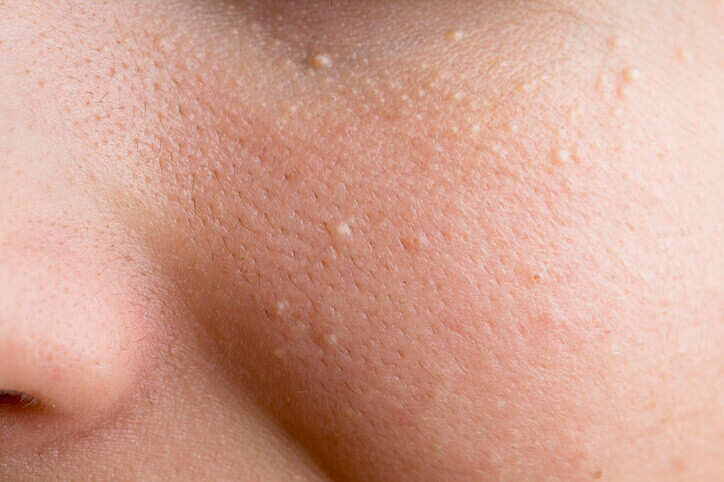Popping Whiteheads: How to Zap Them the Proper Way

Whiteheads are a common type of acne, and while they might seem harmless, dealing with them the wrong way can lead to skin damage or scarring. Many people ask, "Can you pop whiteheads?" and the answer isn't always straightforward. In this guide, we’ll walk you through everything you need to know about popping whiteheads safely and explore other effective ways to manage them.
Are You Supposed to Pop Pimples?

Popping pimples, especially whiteheads, is a tempting but risky move. Whiteheads are closed comedones, meaning they form just beneath the skin’s surface. Because of this, improper popping can push bacteria deeper into the pore, potentially causing inflammation, infection, or scarring. If whiteheads are not fully developed or handled incorrectly, you risk aggravating your skin.
That said, when done properly, popping fully-formed whiteheads can help clear out clogged pores. The key is knowing how to do it safely to avoid damaging your skin.
What Happens to a Whitehead If You Don't Pop It?
If left untouched, most whiteheads will eventually resolve on their own. The body works to naturally push the clogged material to the surface, and the whitehead may dry up or open on its own with time. However, for stubborn or recurring whiteheads, it’s important to address the root cause, such as oily skin or dead skin cell buildup.
Steering Clear of Whiteheads Without Popping
If you prefer a hands-off approach, there are several ways to remove whiteheads properly without squeezing them. These include:
- Cleansing with gentle, non-comedogenic products.
- Applying topical treatments with benzoyl peroxide or retinoids to reduce blemishes.
- Using chemical exfoliants, like salicylic acid or glycolic acid, to remove dead skin cells.
 IS Clinical Tri-Active Exfoliating Masque
IS Clinical Tri-Active Exfoliating Masque
Proper Way to Pop Whiteheads
Popping whiteheads doesn’t have to be harmful if you follow these steps to minimise damage and keep your skin healthy:
1. Wash Your Hands and Face
Clean skin is crucial to prevent bacteria from spreading. Use a gentle cleanser to wash your face and thoroughly clean your hands. An ideal gentle cleanser should be specifically formulated to remove impurities without stripping the skin of its natural oils.
 Propaira Gentle Cleansing Wash
Propaira Gentle Cleansing Wash
2. Prepare the Area

Apply a warm compress to the whitehead for a few minutes. This softens the skin, making the extraction process easier.
3. Sterilise Your Tools

Always use a sterilised comedone extractor or a clean tissue when dealing with blemishes to prevent introducing bacteria to the skin. This helps reduce the risk of infection, irritation, or further breakouts, ensuring your skin stays as healthy as possible during the process.
4. Gently Apply Pressure
Using clean fingers or a sanitized extraction tool, apply gentle, even pressure around the whitehead. Avoid squeezing too hard or using your nails, as this can lead to irritation, scarring, or infection. If the whitehead doesn’t release easily, stop and leave it alone to prevent damaging your skin. It’s better to wait than to risk harming the area.
5. Cleanse After Extraction

Once the whitehead is safely removed, cleanse the area thoroughly with an antiseptic, toner, or a gentle antibacterial solution. This helps remove any remaining bacteria and reduces the risk of infection. Follow up with a soothing moisturizer to calm the skin and promote healing.
Additional Tips
1. Avoid Picking at Your Skin to Prevent Scarring
Picking or scratching at your skin can damage the epidermis, leading to scars or dark spots.
2. Only Pop Whiteheads That Are Fully Formed
Attempting to pop whiteheads that are not close to the surface can cause irritation or infection. To determine if a whitehead is ready to be popped, look for a visible white tip on the surface of the skin, which indicates that the pus is near the surface. The skin around the whitehead should not be red, swollen, or inflamed, as this could mean it's not fully developed and could worsen with pressure. If the whitehead feels deep under the skin or resists gentle pressure, it’s best to leave it alone and let it heal naturally or use treatments like salicylic acid or benzoyl peroxide to speed up the process.
3. Be Patient with Healing
Allow your skin time to heal after popping a whitehead. Avoid applying makeup or other irritants immediately afterward.
When Professional Treatment Is Needed for Whiteheads
If you’re dealing with frequent or severe whiteheads, it might be time to seek professional help. A skin professional can provide treatments like chemical peels, extractions, or prescription medications to target whiteheads and improve your skin’s overall health.
Get Holistic Acne Management with Expert Guidance
Managing whiteheads is about more than just popping them. From understanding what causes whiteheads to exploring safe removal techniques, taking a comprehensive approach is key. Here at Skin to Heart, our team of skin experts is dedicated to helping you achieve your skin goals holistically. Book a consultation with our specialists today to create a personalised treatment plan for your skin. Together, we’ll zap those pesky whiteheads and reveal radiant, healthy skin.
0 comments

